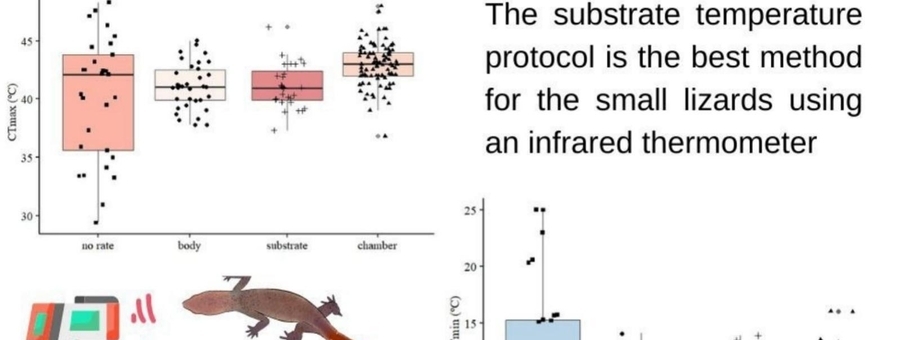
Different approaches to understanding methodological adequacy in ecophysiological studies on small ectotherms
Body temperature (Tb) variation and environmental temperature gradients are more intense in small individuals because their body size allows for a more intimate relationship between Tb and the environment. To contribute to a methodological consensus on the ecophysiology of small ectotherms, we aimed to investigate whether different approaches and methodological techniques affect the measurement of critical temperatures in a small lizard (Coleodactylus meridionalis, Sphaerodactylidae) from the Atlantic Forest of southern Bahia, Brazil, and subsequently its vulnerability assessment. We measured two metrics of thermal physiology: critical thermal minimum (CTmin) and critical thermal maximum (CTmax). In total, four types of temperature measurements (protocols) were defined. In the first protocol, we estimated CTmax/CTmin without heating/cooling rate by directly measuring the lizard's midbody temperature. In the other three protocols, we used a ramping assay with a heating/cooling rate to estimate CTmax/CTmin in the chamber (height: 11.3 cm), substrate, and Tb of the lizard, respectively. In total 116 individuals of Coleodactylus meridionalis were collected, of which 177 CTmax and 131 CTmin were performed. C. meridionalis showed a mean CTmax of 41 °C and a mean CTmin of 8.9 °C when considering the Tb protocol, which is intermediate compared to the other protocols. The substrate temperature protocol was the closest to Tb, and for this, the best method for the small lizards using an infrared thermometer.






